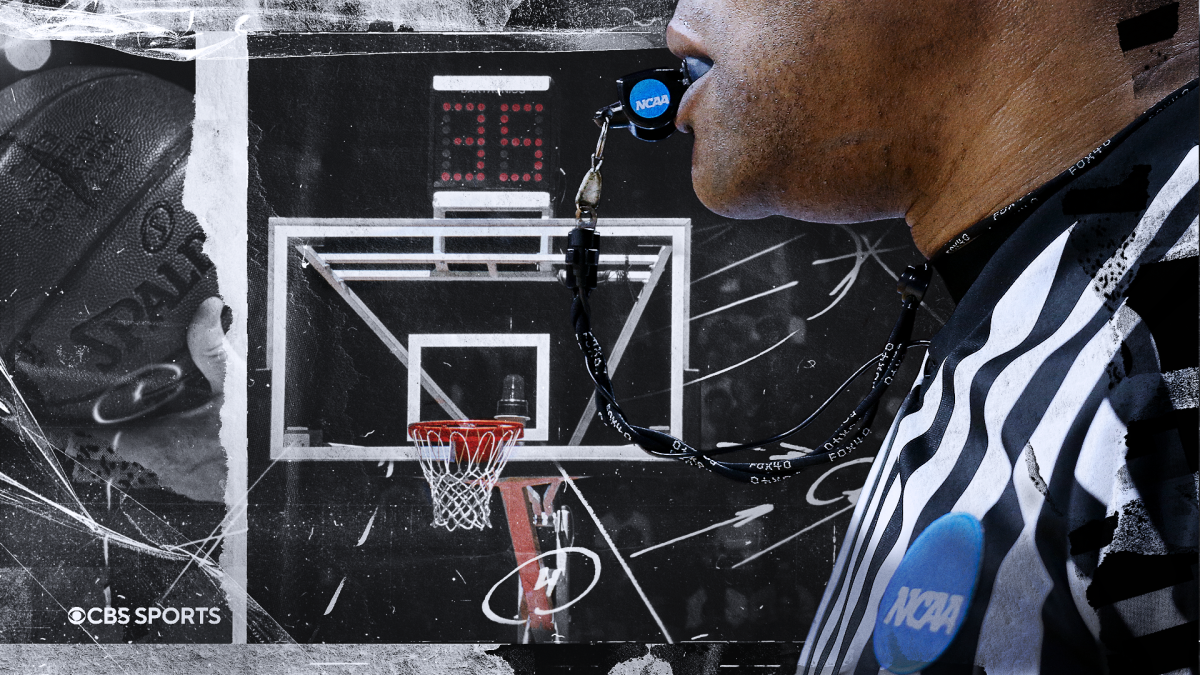
Candid Coaches: Which on-court rule change should come next to men's college basketball?
Four quarters? Advance the ball past half-court? Six fouls? A 24-second shot clock? We got all of those answers and many more
By Matt Norlander
Today's question is one we've come close to asking in the past couple of years. While there is usually a reliable offseason news cycle of rule changes impacting college basketball away from the court, what about the rules inside the lines?
The NCAA Men's Basketball Rules Committee makes official tweaks every two years (here are the upgrades coming this season), but some argue there's still plenty of room for Division I men's college basketball to better its game — and to exercise a bit more expeditiousness in getting there.
This is definitely a topic a lot of coaches have opinions on. So, we thought this would be the right year to ask:
If you could change one on-court rule, what would it be?
| Advance the ball in final two minutes (after a team timeout) | 28% |
| 24-second shot clock | 21% |
| Four quarters | 20% |
| Instant replay/coaches challenge/improve monitor reviews | 7% |
| FIBA goaltend rule | 5% |
| Change the flop technical | 4% |
Quotes that stood out
Advance ball past half-court after a TO
• "I think it makes games more exciting. It's more exciting for fans, it gives teams opportunity to execute sideline out-of-bounds sets, puts more pressure for teams on defense. I think it puts a lot more emphasis on late-game execution, where you can get the buzzer-beater the length of the court, but it's so much more difficult."• "More exciting, more strategies involved."
• "I don't have the ability to prove this, but if you measure over the amount of time the number of failed full-court (end-of-game) plays, the game would be far more exciting if you advance the ball. I've had a couple of moments where we've made some full-court shots, and they were just lucky. To me, it's completely bonkers that that's the product we're putting out there. I've lost so many more games not being able to advance the ball — and I've won so many games because the other team couldn't advance the ball."
• "I think it brings in more coaching, and an ATO (after timeout) can help win a game."
Move to 24-second shot clock
• "A 24-second shot clock would make our game faster. And teach players how to play. Instead of set-happy micromanaging coaches."• "FIBA and NBA, it's at 24. It will give teams more possessions and will help the pace of the game."
• "Faster game. Players have to make quick decisions. Players have to play. Practices mean more because you have to teach guys how to play. Skill development is more of a premium. Increase scoring due to more possessions per team. Much harder to sit on the ball. Have to initiate offense much quicker and more precisely. FIBA rules are awesome. Depth matters more. At our level, the media timeouts are outlandish."
• "I don't know if [college basketball is] ready or not, but what it does is it prepares our kids more for the next level which, at least at this level, it's their goal to play professionally. I say why not prepare our kids for that now?"
Ditch two halves for four quarters
• "There needs to be uniformity across the game. I would go to quarters to get on the same page as all other organized basketball leagues."• "Would allow for a reset of the team fouls at the end of every quarter. This would alleviate a lot of teams getting into the bonus for such long stretches, turning the game into a constant march to the free throw line."
Miscellany
• Allowing coaching challenges: "I think we're coming into that age where you can change a rule or whatever, but you look at the NBA, the NFL, we're behind the times in using our technology to make it a better game. There's too much at stake for you not to be able, as a coach, say, 'That call is wrong, I want to challenge it' once or twice a game. It's part of other sports, it should be part of ours."• FIBA goaltending rule: "Once the ball hits the rim, anyone can touch it. It's too difficult to officiate [the way it is] and [with the new rule] most times you're rewarding a player/ team that didn't check out."
• Six fouls: "We want to see the best players on the floor. The foul is overly penalized. You get a team foul, which leads to free throws, good players get taken off the floor and you let the other team set their defense after free throws."
• More on six fouls: "You want your best players to be out there and I think it messes the game up. There's just a number of reasons. We're the only sport that you can get taken out of the game for fouling, other than soccer. If we could have six fouls, it would be better."
• Semi-solution for end-of-game fouling: "I like the rule The Basketball Tournament did where fouls within the Elam Ending are one free throw and the ball. Cut down on some of these late-game extended situations with excessive fouling. Tighten the game up at the end and force action to happen in live play."
